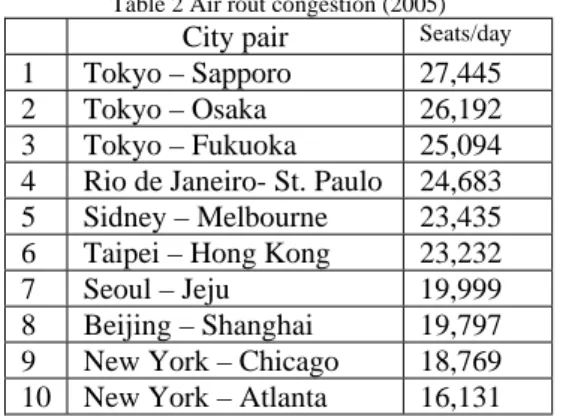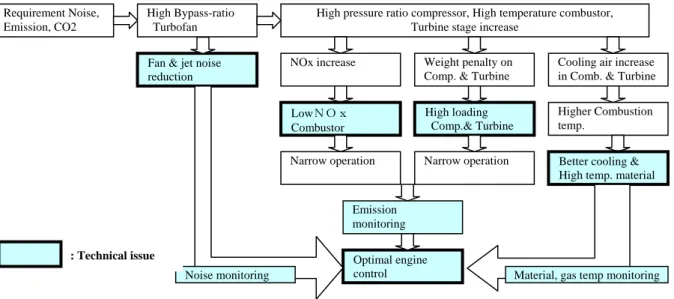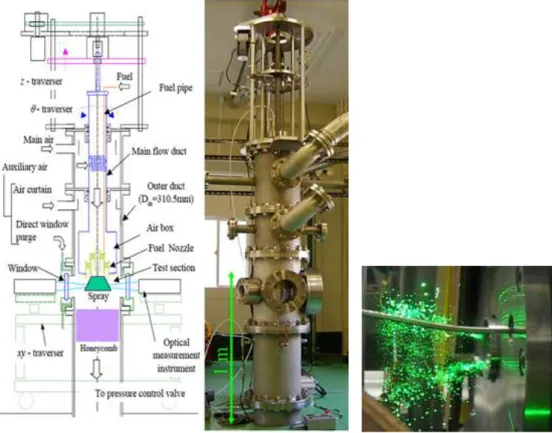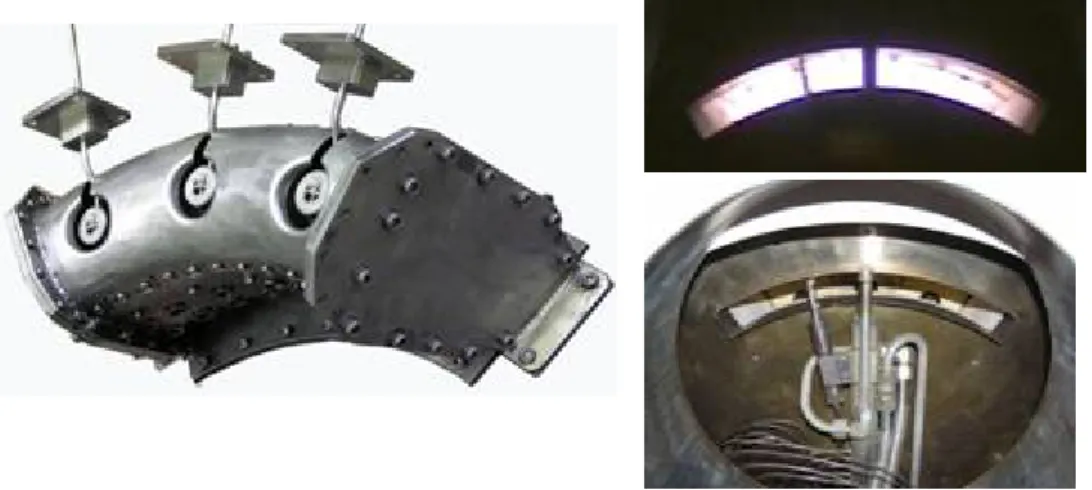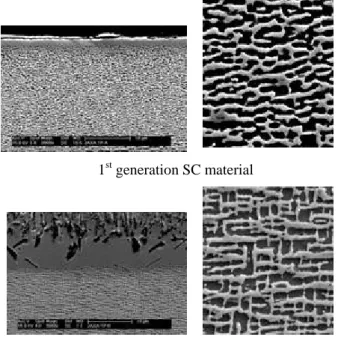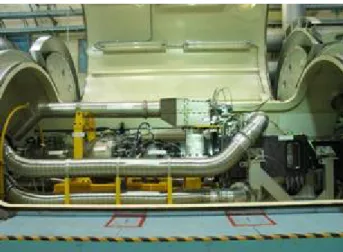JAXA TechCLEAN Project
Hisao Futamura, Shigeru Hayashi
Clean Engine Technology R&D Project Team, Japan Aerospace Exploration Agency 7-44-1 Jindaiji Higashi-machi, Chofu, Tokyo 182-8522, JAPAN
Futamura.hisao@jaxa.jp
Keywords: Environment, NOx, Engine noise Abstract
The JAXA’s TechCLEAN project (2003 - present) is summarized, with the interim technical achievements. TechCLEAN is collateral program with the NEDO engine project to accelerate R&D work of small passenger aircraft engine as well as to develop innovative environment technologies applicable to the future improvements. In the project NOx reduction, CO2 reduction and noise reduction are targeted.
Component level researches and system demonstrator validation are planned with test facility renovation and demonstration base engines.
Introduction
Project initiation
The Japan Aerospace Exploration Agency, JAXA, has been promoting the TechCLEAN project since 2003, which is aiming new engine technologies development for environmentally friendly and affordable passenger aircraft engines of small and medium size. The objective of the project is set by typical engine indicators of exhaust emission NOx, airport noise, and the SFC as the reflection of vast concern about around airport air pollution and noise, as well as airline proficiency. Those are well clearing the current ICAO regulation and viable within ten years but still challenging.
The project consists of two parts, the support activity for the Japanese governmental R&D program,
“Environmentally Compatible Engine for Small Aircraft Project (ECO Project)” and advanced technology development work. We are taking concurrent approach for these works as;
1. Design analysis of new modeling with reliable tools
2. Component and sub-component test with refurbish facilities
3. Component and sub component technology research with innovative apparatus
4. Improvement of analysis tools and validation with actual hardware
5. Engine development support and advanced component validation
Objectives
Background
More than 80 years we have utilized aircraft as the mean of travel and transportation. The advantage of vehicle speed has never overtaken by other vehicles,
ships, trains and automobiles. Distributed ground system, which is composed of no longer than 4 kilometers well paved runways and navigation facilities enable aircraft operation connecting any pair cities and city networks, which prevents abused reclamation. The number of aircrafts and revenue passenger miles of air transport continuously increase.
In these days not only fighting against other transportations, but the cooperating with other transportation like high speed trains and airport shuttle, rental cars provide us the seamless services for users.
On the other hand, quantitative expansion of air transportation has proportionally growing impacts on surrounding communities. Powerful jet engine generates comparable noise with thunderbolts, and hundred times greater amount of exhaust emission substances than ships of the same weight. Since 1970’s ICAO has set regulations on aircraft noise and engine emissions around airport operation. All the aircraft and engine manufacturers and research organizations, universities have devoted to the ceaseless technology developments for reducing the emissions.
Historical environmental issue
The first passenger jet aircraft of the world is De Havilland Comet powered by RR Ghost turbojets in 1952, which has almost the same dimensions with Douglas DC-6 and range performance (Table 1).
There was no concern about environmental issue at this moment though it flies with pure jet sound and black smoke trail.
Table 1 Comparison of airplanes
Comet IV DC-6B
Length [m] 33.99 32.18 Span [m] 35 35.81 Cruise speed [km/h] 784 509 Range [km] 4590 4300
Passenger 76 82
Technical ideas for lengthen the range or improve
the fuel consumption were found in the patent of
1930’s. The emerge of turbofan engine delayed in 20
years since high compression ratio needed multi
spools compressor or variable stator vanes, the low
bypass ratio engines, RR Conway, P&W JT3-D have
as half the fuel consumption rate and resulted in large
turbo-plop aircrafts soon disappeared. In 1970’s world
oil crisis and environmental concern of citizen’s
movement arose. It denied high speed flight because
of sonic boom, airport noise and expensive cost.
Rather it called for larger passenger airplane with higher bypass ratio engines as P&W JT9D, GE CF6, and RR RB211 which have lower fuel consumption with lower exhaust gas speed, which seems preferable for noise abatement, but required much higher compression ratio and elevated combustion temperature. They brought high temperature resistant material developments and effective turbine cooling technologies and low NOx combustion.
Target engine class
The size of aircraft and its engine have evolved to 800 passenger A380 aircraft and 3 meters diameter giant GE90 engines. Short range air routs should be covered by smaller aircrafts. One of the congested air routs in the world is between Tokyo and Osaka, which is 500km apart, where Japanese Shin-kansen super express train carries 1600 passengers every 10 minutes (Table 2).
Table 2 Air rout congestion (2005)
City pair
Seats/day1 Tokyo – Sapporo 27,445 2 Tokyo – Osaka 26,192 3 Tokyo – Fukuoka 25,094 4 Rio de Janeiro- St. Paulo 24,683 5 Sidney – Melbourne 23,435 6 Taipei – Hong Kong 23,232
7 Seoul – Jeju 19,999
8 Beijing – Shanghai 19,797 9 New York – Chicago 18,769 10 New York – Atlanta 16,131
East Asia is densely populated and 200 cities over million residents, which is promisingly growing market covered by 100 passenger 1000 km range class aircrafts for airlines, those aircrafts could be powered by the turbo-plop or the turbo-fan category.
Here, we are taking turbo-fan engine considering high speed adaptability and near term entry into service.
Technical difficulties with this engine are found out as a logical tree chart Fig. 1.
Stringent environmental regulation
Fig. 2 & 3 show the ICAO environmental regulation rule on the new products to promote innovation and accelerate obsolete aircraft retirement accounting for balancing the proper airline management and the social demand fulfillment. The regulation level should be considered not the development target but the margin of lifelong usage.
The goals of Eco-engine project are to reduce the emissions of NOx by more than 50% from the ICAO CAEP 4 standards and noise by 20 dB from the ICAO Chapter 3 regulation and to improve thermal efficiency by 10% over the most recent small aircraft engines
1). TechCLEAN set higher level for those measures as on the charts.
Low NOx combustion
Scientific approach
Current liquid spray combustion technology reached the level of nearly 100% combustion efficiency at design point. To lessen the nitrogen oxide content of exhaust gas many ideas have been proposed and tried. There are three practical methods are under developed, lean pre-mixed pre-vaporized, rich burn & quick quench, and rapid mixing flame. All these ideas need fine fuel droplet size spray atomization technique, precise air and fuel distribution control technique at wide range of engine operation.
Theoretical design method has not been acquired on combustor development. Try and error development does not suit for time and cost, but parametric screening procedure is usually taken as mentioned bellow.
Optical measurement
Combustion phenomena comprises complex physical process of two phase flow of liquid fuel droplet and air spray atomized and vaporized, then chemical reaction of many species occurs. A special laser instrument was developed for observing fuel spray under high pressure to evaluate fuel nozzle characteristics.
Fig. 4 is the outlook of the instrument equipment and laser diagnostics of droplet size and distribution
2,3).
Numerical simulation
The air flow inside the combustion chamber is so complex that swirl and recirculation impinging wall cooling air and dilution exist. Recent development reveals the flow by computational fluid dynamics simulation Fig. 5. The particle tracing method enables summation residual time, which has close relation with NOx formation.
Single burner test
Fuel spray and fundamental combustion characteristics with certain swirler combination are examined at actual pressure and temperature condition as a single burner test.
Sector combustor rig test
Current turbofan engine anonymously adopts an annular type combustor which is light weight and small volume. Sector combustor model consists of several portions of three or more fuel nozzles Fig. 6.
Test results are graphed in Fig. 7, which clears the target value
4,5).
Annular combustor rig test
Full annular combustor test is necessary work of
combustor development since the sector combustor
test includes the side wall effect which affects in
quantitative evaluation in emission. Igniter location,
exit gas temperature profile are also examined in this configuration.
For this purpose 30 years old annular combustor test facility was renovated to resume operation in JAXA Fig. 8
6).
CO2 reduction
Oil crisis
As comparable market dependency of 1972 oil crisis, the fuel price has steeply come up as Fig. 9.
And it reached 100 dollars in the beginning of this year Fig. 10
7). Air transportation market wants it calm down. Engine development projects are expensive investment which are sensitive to airline management balance and reflect market prospect.
Technical aspects of CO2 reduction is comprises with system and component efficiencies improvement and engine weight reduction. From the view of the engine cycle efficiency, higher bypass ratio is advantageous for better fuel consumption, but mechanical difficulty and cost up exists for especially small size engine.
Advanced composite material application, higher work loading turbo machinery, geared fan, booster less fan, and etc, those are of course innovative and suitable for certain application. We should continue to seek those technologies but in short term difficult to adopt because of lack of basic data.
Turbine cooling improvement
High temperature combustion and turbine technology is essential for the engine technology, because theoretically maximum thermal efficiency depends on the temperature ratio of the engine cycle by thermodynamics.
In airline operation maintenance cost of aircraft engine is of great concern. It is controversial in that turbine cooling air reduction is necessary for lower SFC and NOx reduction. The turbine cooling mechanism is so complex that convective and impinging and film cooling are applied to the small turbine blade. JAXA developed advanced numerical conjugate simulation which calculate flow field inside and outside of turbine blade and calculate heat transfer of blade at the same time Fig.11. They are also experimentally validated with infrared thermo viewer camera measurement Fig. 12
8,9,10).
New cooling channel design turbine was invented for small size engine which is so small that traditional cooling mechanism can not be applied Fig. 13
11).
High temperature material
Among the engine parts HPT blade is shortest life due to thermal deterioration. Directionally Solidified process and Single Crystal process are common in casting the HPT blades. The microscopic investigation of the test piece tested under sinusoidal thermal stress and oxidation simulated low cycle fatigue reveals the
rafting mechanism of super-alloy crystal Fig. 14 & 15
12)
.
Engine Noise reduction
Fan noise and jet noise
High bypass ratio turbofan engine is much less noisy than the old engines. There are mainly two kind of noises generated in the turbofan engine. One is the fan noise which is caused by the rotating fan blades and the other is the jet noise which is caused by the sear layer interaction of high speed exhaust jet and surrounding air. The aircraft noise near airport is evaluated the sum of noise (EPNdB) at takeoff, side line and approach. At takeoff jet noise and buzz saw fan noise are dominant and at approach fan blade tone noise is significant.
CFD simulation of fan noise
Noise is pressure oscillations of flow field.
Unsteady inviscid high order Eulerian scheme computation of fan and OGV is shown on Fig. 16. The sound wave generated by the blade and vane interaction transmits forward through the fan blade is observed. Outside of the engine the sound wave propagation with acoustic equation theory is calculate
13). Jet noise is also analyzed by LES.
14).
Noise measurement and dynamic source allocation Engine noise measurement technology is also developed using small turbojet engine out field test Fig.17, which shows the jet noise is dominant at high speed and fan noise at low speed Fig.18. The ICAO noise regulation is applied for the airplanes which takeoff and landing at the airport. Noise source allocation technique should be capable of analyzing moving object. Innovative measure and analysis system was developed using simulated scale model aircraft flight Fig. 19
15).
System demonstration
Engine control
Environmental and economic requirement may result in operational limitation of certain modules of the high bypass turbofan engine as Fig. 1. FADEC, full authority digital engine control system is mostly used for proper engine operation and systematic interface with FCC in current airplane system. Rapid evolution of Intelligent Technology enables data acquisition and engine control in real time. Today’s computer has much stronger potential to calculate complex engine parameters and to compare with the database and to judge the adaptability to the prescribed logic, so called intelligent control. The innovative technology should be validated in test engine operation before it is thought to be of the art.
We are developing control system with small turbojet
engines in ATF of our own Fig.20
16).
ESPR demonstrator
More practical and direct resolution of control system development is to apply the control system to the actual engine system. ESPR engine demonstrator was developed in 2000 as the HYPR 90-T VCE based two-spool turbofan engine. JAXA got the transfer of this engine from NEDO in 2006 Fig. 21. It features high loading fan, high temperature combustion.
Counter rotating spools, low noise exhaust mixer which are common with the Eco-engine design. The ESPR engine test is started in this January.
Conclusion
Current issues, the global climatic warming issue, surging crude oil price by swelled up financial fund, optical chemical smog revival in the East Asia, those are not directly obligated to aero engine origin, but local environmental impact of noise and air pollution might obstruct healthy evolution of air transportation.
References
1) Funatogawa: Research and Technology Development in Japanese Environmentally Compatible Engine for small Aircraft Project, ISABE 2005-1010, 2005.
2) Matsuura, K, Zarogoulidis, K, Hardalupas, Yannis, Taylor, A.M.K.P. , Kawaguchi, T, Sugimoto, K, and Hishida, K.: Simultaneous Planer Measurement of Size and Three- Component Velocity of Droplets in An Aero- Engine Airblast Fuel Spray by Stereoscopic Interferometric Laser Imaging Technique, Paper ID ICLASS06-240, 2006.
3) Matsuura, K., Kurosawa, Y.: Effect of Swirl Combinations on Spray Dispersion
Characteristics of a Multi-Swirler Airblast Atomizer, 20th Annual Meeting of the Institute of Liquid Atomization and Spray System (ILASS- Europe 2005) p355-360.
4) Makida, M., Yamada, H., Kurosawa, Y, Yamamoto, T, Matsuura K, and Hayashi, S.:
Preliminary Experimental Researches to Develop a Combustor for Small Class Aircraft Engine Utilizing Primary Rich Combustion Approach, Proceedings of GT2006, ASME Turbo Expo 2006: GT2006-91156, Power for Land, Sea and Air, May 8-11, 2006, Barcelona, Spain.
5) Makida, M., Yamada, H., Shimodaira, K., Yamamoto, T., and Hayashi, S.: Optimization of a Small Aircraft Combustor to Reduce NOx Emissions under Practical Conditions, Proceedings of GT2007, ASME Turbo Expo 2007: GT2007-27969, Proceedings of GT2007, ASME Turbo Expo 2007: Power for Land, Sea and Air, May 14-17, 2007, Montreal, Canada.
6) Hayashi, S.: An overview of JAXA’s
TechCLEAN Project – Technology Development Project for Environmentary compatible
Aeroengines, ISOABE2007-1010,2007.
7) MFGlobal: clued oil market price, 2008.1.8 8) Yamane, T., Yoshida, T., Enomoto, S., and
Others: Conjugate Simulations of Flow and Heat Conduction with a New Method for Faster Calculation, ASME Turbo-Expo 2004, GT2004- 56380.
9) Yamane, T., Bamba, T., Fukuyama, Y.:
Conjugate Simulation of Flow and Heat
Conduction by a Common CFD Platform UPACS, 2005 Asian Congress on Gas Turbines.
10) Bamba, T, Yamane, T, and Fukuyama, Y, Turbulence Model Dependencies on Conjugate Simulation of Flow and Heat conduction, GT 2007-27824, ASME Turbo Expo 2007, 2007.
Fourth Generation Single Crystal Superalloy, TMS-138, August 2004, NIMS.
11) Nakamata, C., and Others: Spatial Arrangement Dependence of Cooling Performance of an Integrated Impingement and Pin Fin Cooling Configuration, ASME Turbo Expo 2005.
12) Fourth Generation Single Crystal
Superalloy,TMS-138, August 2004, NIMS.
13) Kazawa, J., Horiguchi, Y., Saiki, K., Yamamoto, K., Nozaki, O., Oishi, T.:Numerical Analyses of Fan Tone Noise Generated by Rotor-Stator Interaction, TS-025, IGTI2007, GTSJ, 2007.
14) Enomoto, S., Nozaki, O., Imamura, T., Yamamoto, K.: Large-Eddy Simulation of Jet Noise using Multi-Block Structured Grid, TS-026, IGTI2007, GTSJ, 2007.
15) Http://www.apg.jaxa/info/prm/005/01.html:
Environmental Efficiency Requirements for the Aeroengine, JAXA homepage,2007
16) Tagashira, T., Koh, M., Sugiyama, N.: Dynamic
Characteristic Tests of Single Spool Turbojet
Engine Using Altitude Test Facility,AIAA2007-
5012,2007
Fig. 1 Logical tree chart of TecCLEAN project issues
Requirement Noise, Emission, CO2
High Bypass-ratio Turbofan
Cooling air increase in Comb. & Turbine Fan & jet noise
reduction
NOx increase
High pressure ratio compressor, High temperature combustor, Turbine stage increase
Higher Combustion temp.
LowNOx Combustor
Narrow operation
Weight penalty on Comp. & Turbine
High loading Comp.& Turbine
Narrow operation Better cooling &
High temp. material
Optimal engine control
Noise monitoring Material, gas temp monitoring
Emission monitoring
: Technical issue
0 0.1 0.2 0.3 0.4 0.5 0.6 0.7 0.8 0.9 1 1.1 1.2 1.3
1985 1990 1995 2000 2005 2010 2015
Fig.3 ICAO NOx Regulation & target
ICAO LTO CYCLE -20%
-16%
-8%
CAEP1
CAEP2
CAEP4
NEDO Project
JAXA TechCLEAN
-50%
-80%
V2500-A1
CF34-8C1 PW4152V2530-A5
AE3007
CFM56-7B22/2 CF6-80-C2B4
CFM56-TAPS
-50 -40 -30 -20 -10 0 10 20 30
1970 1975 1980 1985 1990 1995 2000 2005 2010 2015 Fig.2 ICAO Noise Regulation & target
ICAO Regulation Chapter 2
Chapter 3 Chapter 4
JAXA TechCLEAN
-20dB
-10dB -23dB
-20dB A320-231
B-757-200
EMB-145 MD-80
B717-200 NEDOProject MD-90-30
CL-601-3R
Fig. 4 Optical measurement of high pressure fuel spray
Fig. 5 CFD analysis in the combustion chamber
Fig. 6 Sector combustor and traverse measurement
CAEP4規準 エコ目標値 実測値
100%
90%
48%
100%
90%
1%
100%
50%
4 1 %
0%
20%
40%
60%
80%
100%
ICAO CAEP4との比較
CH Sooth
NOx Measurement
Target CAEP4
Fig. 7 Test result of sector combustor
Fig. 8 Annular combustor & test facility
Fig.9 Crude oil market price trend (20 years)
Fig.10 Crude oil market price trend (10 months)
Fig. 12 Temperature distribution
Cooling air
Fig. 11 Conjugate CFD analysis on turbine wall
Fig. 15 SC alloy structure after thermal fatigue test 1
stgeneration SC material
4
thgeneration SC material Fig. 14 Thermal fatigue Burner rig test
Fig. 16 Sound wave field of blade and OGV
Fig. 18 Overall noise level of turbojet engine
Fig. 17 turbojet engine noise test at Noshiro test center
V=160km/h (~44m/s)
Around the Nacelle
